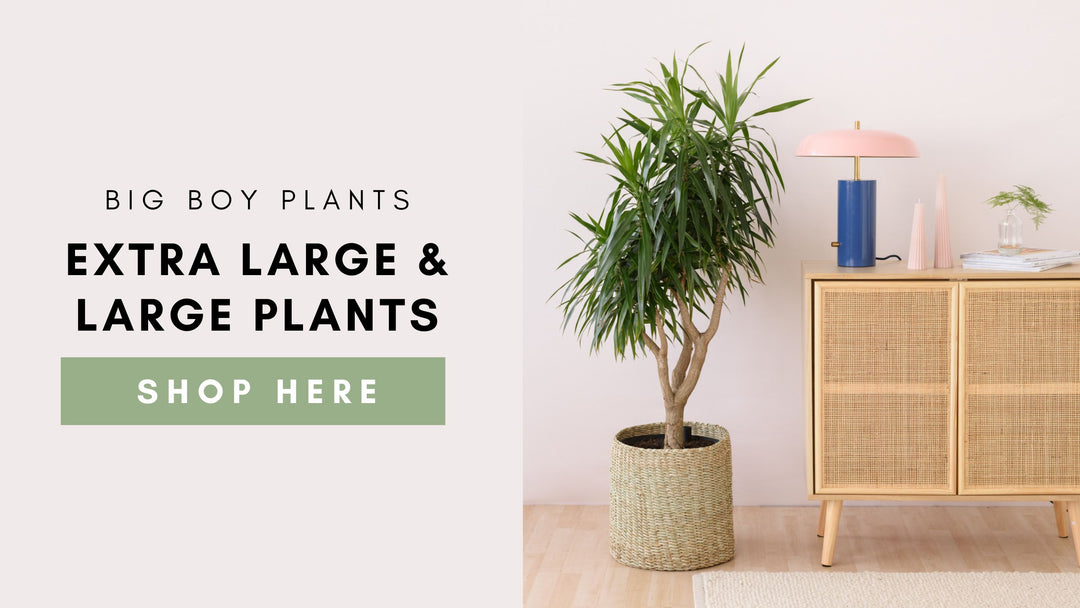Pothos Pictus Care Instructions
Scientific name: Scindapsus pictus 'Argyraeus'
Synonyms: Satin Pothos, Silver Pothos
Have you ever dreamed of bringing the untamed beauty of the tropical rainforest into your home? Then consider the Satin Pothos, a houseplant that will transport you to the heart of the lush wilderness, one leaf at a time. Also known as the Silver Pothos, this captivating green companion is not just a plant; it's a piece of pure, unadulterated jungle magic right in your living room
Hailing from the humid, vibrant rainforests of Southeast Asia, the Scindapsus Pictus thrives in warm, humid conditions, though the average room seems to be just fine for great growth. With its unique silver-speckled leaves, it has evolved to tolerate a wide variety of lighting conditions, barring full sun.
Worried about your green thumb? Fear not! Scindapsus pictus is the ultimate houseplant for those looking for a hassle-free green companion. It's incredibly forgiving, thriving in indirect light and forgiving your occasional forgetfulness when it comes to watering. Just keep the soil lightly moist with short periods of dryness in between, and it will reward you with its radiant foliage.
Let your creativity run wild by styling the Pothos Pictus in hanging baskets, on shelves cascading gracefully, or as part of a hanging display. Its vines are perfect for adding that touch of 'jungle chic' to your interior decor. Mix and match with other indoor plants for a vibrant, Instagram-worthy indoor jungle.
So, why not embark on a leafy adventure with the Pothos Pictus? With its captivating looks and easy - going nature.
Several species of the genus Scindapsus pictus 'Argyraeus' are moderately toxic to cats due to the presence of calcium oxalate crystals in their tissues. These crystals can be absorbed through the skin and mucous membranes if the plant is ingested or if the leaves, stems, or roots are broken and exposed.

Pothos Pictus Common Symptoms
Fixing issues with Scindapsus Pictus 'Argyraeus' to keep your plant thriving is essential for maintaining its beauty and vitality.
- Yellowing Leaves: Can signal overwatering. Allow the soil to dry before watering. Adjust your watering schedule to ensure the soil remains consistently moist, not soggy. TOP TIP: Wait for all the leaves to curl sightly, this is a good sign your plant is thirsty.
- Leaf Browning or Curling: This is often a sign of low humidity or inadequate watering, hence curling is a good sign to know when to water. Increase humidity by misting the leaves regularly, and consider using a humidity tray. Ensure you're watering consistently, keeping the soil evenly moist but not waterlogged. Check out our Beginners Guide for Thriving Plants.
- Leggy Growth and Sparse Foliage: Your Pothos Pictus is not getting enough light. Place your plant in bright, indirect sunlight. You can also rotate the plant occasionally to promote even growth.
- Root Rot: Overwatering or poor drainage can lead to root rot. Repot your plant into well-draining soil and a pot with drainage holes. Be cautious not to let the soil become waterlogged.
- Lack of Vigorous Growth: Stagnant growth may be due to nutrient deficiency. Feed your Scindapsus Pictus 'Argyraeus' with a balanced, diluted fertiliser during the growing season (spring and summer) to provide the necessary nutrients for robust growth.
- Pests: They is relatively pest-resistant; however, they can be susceptible to common household pests if not kept in their optimal conditions. If Pests are detected immediately quarantine and treat with an organic pesticide, until the infestation subsides. Learn more Treating and Identifying Common Houseplant Pest Infestations here.

Pothos Pictus Care Instructions
- Origin: Southeast Asia
- Height: Can reach 3 meters long.
- Light: Bright filtered light is best. Avoid direct sunlight. Will tolerate low light but will grow very slowly.
- Water: Keep consistently moist, allowing the plant to just reach dryness before watering again. Slight curling is a good sign your plant needs water. Avoid waterlogged soil.
- Humidity: Preferably 50% or higher. To raise the humidity for your plant. Place a plant on a pebble tray. Will also tolerate average room humidity if care is taken with watering.
- Temperature: Pothos prefer warm environments of between 17 °C and 27°C.
- Soil: A well-draining Potting mix with added perlite is ideal.
- Fertilizer: Fertilise once a month from Spring to Autumn with a diluted balanced liquid fertiliser.
- Pruning: Pruning your Pictus is a straightforward process that can help maintain the plant's health and appearance. Use sharp, clean scissors or pruning shears to trim leggy or damaged vines, cutting just above a leaf node to encourage new growth. Regularly remove yellowing or browning leaves to promote a tidy, vibrant appearance. Pruning also helps to control the plant's size, making it suitable for various indoor spaces. Remember that this plant is quite forgiving, so don't hesitate to give it a little trim when needed to keep it looking its best.
- Repotting: Repotting is crucial task for maintaining a healthy and happy Pothos Pictus Begin by choosing a pot no bigger than 5cm larger than it’s previous container with good drainage to accommodate the growing roots. Gently remove the plant from its current pot, being careful not to damage the roots. Shake off excess soil, inspect the roots for any signs of damage or rot, and trim if necessary. Fill the new pot with fresh, well-draining potting mix and plant the Scindapsus pictus at the same level as it was in the previous pot. Water it thoroughly and place it in bright, indirect light to help it settle into its new home. Repotting every 2-3 years or when the roots become crowded is generally sufficient. This will give your Pothos Pictus room to flourish and continue adding charm to your living space.
- Propagation: The best method is through stem cuttings. Select a healthy vine section with at least two leaves, and trim it just below a node. Place the cutting in water or directly in well-draining soil. In water, roots will develop in a few weeks, and then you can transplant it into soil. For soil propagation, create a small hole, insert the cutting, and keep the soil lightly moist, you can also pop it into a sealed clear bag for extra humidity, cracking it open once a week for extra fresh air. Provide bright, indirect light, and within a few weeks, new growth will emerge. Propagation is an excellent way to share the beauty of this plant with friends or expand your collection.the course of five months!



